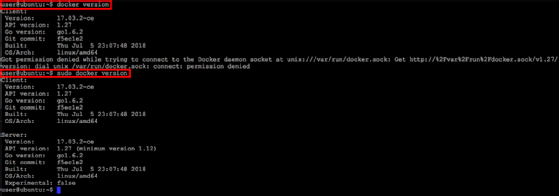

docker-entrypoint.sh: Launching /docker-entrypoint.d/20-envsubst-on-templates.sh docker-entrypoint.sh: Launching /docker-entrypoint.d/10-listen-on-ipv6-by-default.shġ0-listen-on-ipv6-by-default.sh: Getting the checksum of /etc/nginx/conf.d/nfġ0-listen-on-ipv6-by-default.sh: Enabled listen on IPv6 in /etc/nginx/conf.d/nf docker-entrypoint.sh: Looking for shell scripts in /docker-entrypoint.d/ docker-entrypoint.sh: /docker-entrypoint.d/ is not empty, will attempt to perform configuration If the container is still running, it will not return the command prompt.įor example: $ sudo docker container run nginx It means container process attaches to the terminal session and displays the output. When we working with docker containers, there are two modes of running them: attached mode and detached mode.īy default, Docker runs the container in foreground. If you want to explicitly assign a name for your container, let’s run the command with the following syntax: $ docker container run -name container-name image-nameįor example: $ sudo docker container run -name hello-linoxide hello-worldĬONTAINER ID IMAGE COMMAND CREATED STATUS PORTS NAMESĮb2f0c9cc658 hello-world "/hello" 21 seconds ago Exited (0) 20 seconds ago hello-linoxide Output: CONTAINER ID IMAGE COMMAND CREATED STATUS PORTS NAMESĩ41b67537bbb ubuntu "/bin/bash" 4 seconds ago Exited (0) 3 seconds ago musing_elgamalĪ7b197b56d2c bf756fb1ae65 "/hello" About a minute ago Exited (0) About a minute ago determined_faradayĠb40e331161e hello-world "/hello" 4 minutes ago Exited (0) 4 minutes ago nervous_sammet When you run a container with the basic syntax ‘docker container run’, the Docker will randomly generate a name for each container as you can see in the below: $ sudo docker container ls -a It's recommended to preface the docker run command with sudo or the other workaround without sudo. Note: From the Docker version 1.13, due to the new syntax of its release, we use ‘docker container run’ instead of ‘docker run’. For example: $ sudo docker run bf756fb1ae65 The next time you run that image, it is faster than the first one and you can use the IMAGE-ID instead of image name. Hello-world latest bf756fb1ae65 7 months ago 13.3kB Truongnh1992/go latest 57b4af3567ac 3 months ago 7.41MB

Nginx latest 4bb46517cac3 2 weeks ago 133MBĪlpine latest a24bb4013296 3 months ago 5.57MB

Ubuntu latest 4e2eef94cd6b 9 days ago 73.9MB Output: REPOSITORY TAG IMAGE ID CREATED SIZE You can list all of the docker images by running:
#Docker sudo download
From now on, the image was download to your local machine. Then, it creates a new container from that image and streams the output to your terminal. The first time you run the container, the Docker daemon pulls the image 'hello-world' from the Docker Hub. This message shows that your installation appears to be working correctly. Status: Downloaded newer image for hello-world:latest In the following example, you’ll run a container from a public image ‘hello-world’ which is located on Docker Hub. Image-name could be a docker image on your local machine or be pulled from the online registry such as Docker Hub and Quay.io. In order to run a docker container, you can simply run the following command, assuming you have already installed docker: docker run image-name The syntax of the command: docker run image-name Share data between containers and host machine.

Publish container ports to host machine.Create a container from a given docker image.
#Docker sudo software
When working with Docker, software developers mostly use the 'docker run' command to:
#Docker sudo how to
Learning how to use docker run command is a recommendation for any developers who want to get familiar with Docker. The docker run command is used to launch and run containers.


 0 kommentar(er)
0 kommentar(er)
